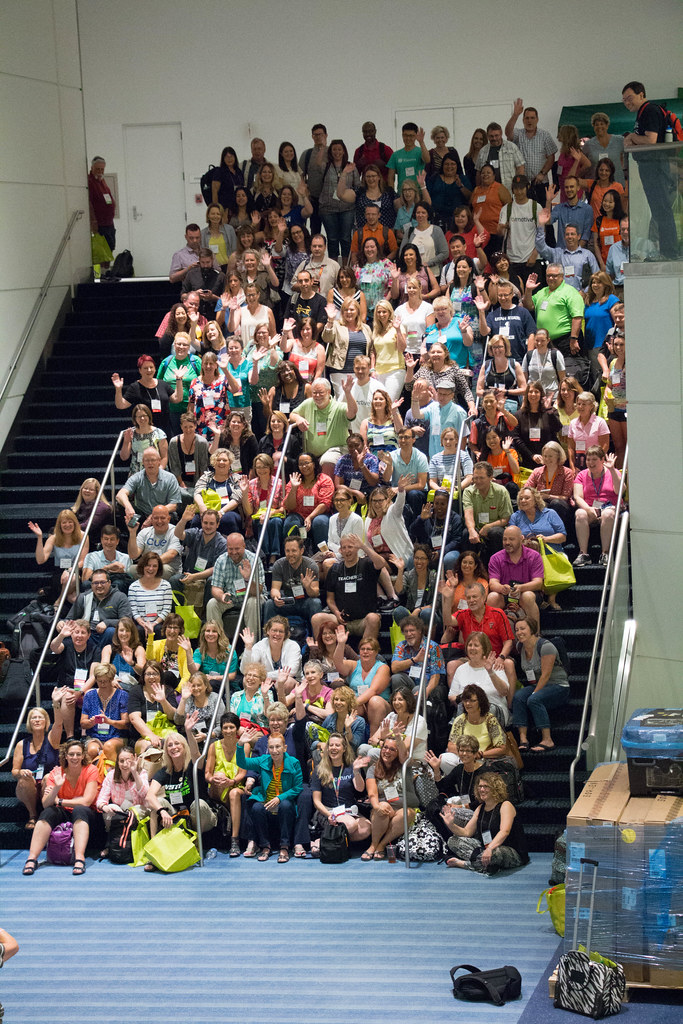Just one last ISTE conference-related post for this season. Promise.
So, coding was also a big topic again this year. After proclamations from the president and corporporate leaders that all students should take computer programming classes, and lots of edtech vendors jumping on the bandwagon, how could it not be?
But the most rational statement on the matter came from Hadi Partovi, co-founder of Hour of Code, the program responsible for jump starting the everybody-must-code movement. At the pre-show for the Tuesday morning keynote he disagreed with that idea, telling the audience flat out that no, every students does not need to learn to code. But every school should offer computer science.
Partovi didn’t have much time to elaborate (in typical talk show format, the next guest was waiting in the wings) and his point was quickly overshadowed a minute or so later by the R2D2 robot he rolled on stage, accompanied by an announcement it would be available for selfies. Shiny objects.
However, that difference between requirement and opportunity needs more emphasis.
Kids certainly need to understand the concepts of programming, the logic behind the computing devices, visible and not, they use everyday. That needs to be a fundamental part of the basic course of study, replacing the rote processing and endless repetition in the K12 curriculum we call “math”.
The computer science classes need to be available for those kids who want to go further. Not to prepare them for one of the umpteen thousands of jobs the industry claims will go unfilled, but because the student chooses to explore an area of study that interests them.
Once again, coding should be one part of every child’s total school experience. An experience that offers them the broadest possible spectrum of what’s available in the world, and helps them make informed choices.






